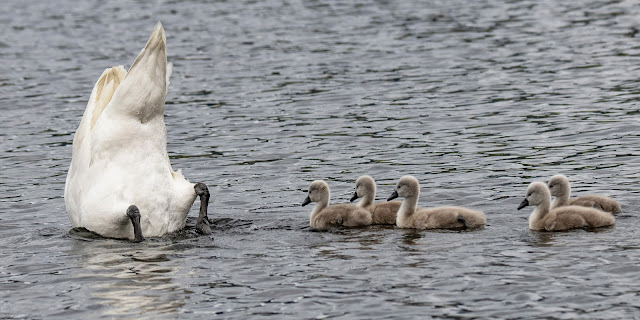 |
| Derwentwater, one of many lakes |
Castlerigg Stone Circle
We started our day at Castlerigg Stone Circle (alternatively Keswick Carles, or just Carles), only two miles from Fern Howe. It sits in a natural amphitheater on a prominent hill to the east of Keswick.
It is one of around 1,300 stone circles (also called cromlechs) in the British Isles and Brittany, constructed as a part of a megalithic tradition that lasted from approximately 3200 to 2500 BC, during the Late Neolithic and Early Bronze Ages.
It was the only Stone Circle we visited. But, we visited twice: the afternoon we arrived as it started to rain and early the next morning.
The stones – glacial erratic volcanic rock boulders from the nearby Borrowdale Volcanic Group – are set in a flattened circle, measuring 97 to 107 feet wide.
 |
| From above; Photo: Redditt |
There is an almost-11-foot-wide gap at the northern edge, which may have been an entrance.
Within the circle is a roughly rectangular setting of a further 10 stones.
The circle was probably constructed around 3200 BC, making it one of the earliest stone circles in Britain and possibly in Europe.
 |
| Perfectly placed |
 |
| It sits among Sheep farms |
This may not be far from the truth. Due to erosion around the stones caused by the large number of visitors to the monument, several smaller stones have “appeared” next to some of the larger stones over the years. Because they are so small, they are likely to have been packing stones buried around the larger stones for support. The exact number of stones depends on whether the packing stones are counted; some count 38 and others, 42.
The original motives behind the construction of Castlerigg, its subsequent uses and how these changed over time are not known. Current thinking has linked Castlerigg with the Neolithic Langdale axe industry in the nearby Langdale fells.
The open field, reached through a gate, is populated by Sheep, most of which I identified as Swaledale.
Cruising on Derwentwater
Our second day in The Lakes, we decided to give driving (and me) a break by taking a scenic boat ride on Derwentwater. It was Caty's idea to take the cruise and I loved it.
The tour is actually just a hop-on-hop-off wooden boat operated by the Keswick Launch Company that stops at several docks around the 2.1-square-mile lake.
There are normally seven stops, but two were damaged awhile ago by a severe storm.
The third largest lake by area, after Windermere and Ullswater, Derwentwater is 2.9 miles long and up to 1.19 miles wide. Its primary inflow and outflow is the River Derwent, which also flows through Bassenthwaite Lake before reaching the Irish Sea at Workington.
There are several islands within the lake, one of which, Derwent Island, is inhabited.
 |
| A stately home on Derwent island |
Derwent means “river with oak trees,” hence of the same origin as other English rivers named Derwent, Darwen, Darent and Dart. Derwentwater gave its name to the Earldom of Derwentwater.
At our first stop, we explored around the lake's edge ...
 |
| Caty on the trail |
The falls are next to a lovely spa and hotel.
While walking in the woods, we saw a few skulky birds. The only one I could capture was a Common Chaffinch.
 |
| Finding bugs in the green, mossy woods |
So, we had to spend about an hour just waiting and watching the birds on and around the dock.
 |
| White Wagtails, adults ... |
 |
| ... and chicks |
 |
| Carrion Crows |
 |
| Mute Swans |
 |
| Mallards |
 |
| A Willow Warbler |
 |
| Canada Geese (yes, really!) |
The boats run in two directions and when the one we didn’t want stopped, we watched a baby White Wagtail jump on the boat as it pulled out. I hope it was old enough to fare for itself or to at least find its way back to its parents.
Our next stop was a lovely beachside, where we walked the trail to the next dock, photographing birds as we walked.
 |
| Lakeside |
 |
| Common Redstarts, lots of chicks .... |
 |
| ... and a few adults |
 |
| Eurasian Oystercatcher |
 |
| Song Thrush |
 |
| Mandarin Ducks, male, chick and female |
 |
| Common Sandpiper |
 |
| Yellow-legged Gulls (see the chick in the bottom right corner?) |
Back at the dock, we saw hundreds of Graylag Geese on the water.
Following our plan, we ate lunch at the Lakeside Café. The food was fairly good, my avocado toast was tasty after I got them to remove the poached egg that I definitely did not order. The waitress tried to make me keep it, saying that they wouldn't charge me. I hate eggs, so, nope!
After lunch, we drove up the single-track road to two of the attractions that appear on the boat tour maps, but are high up the fells above the lake. Surprise View is a natural break in the heavy trees where you can look down on Derwentwater.
It is a lovely spot and a great chance to take the whole thing in at once.
 |
| A stunning view |
The road to Surprise View passes over the traditional stone-built Ashness Bridge, one of the most photographed bridges in the Lake District. Its image is often seen to be adorning biscuit tins and tea towels.
 |
| Ashness Bridge |
Trip date: June 6 - 20, 2024




















No comments:
Post a Comment